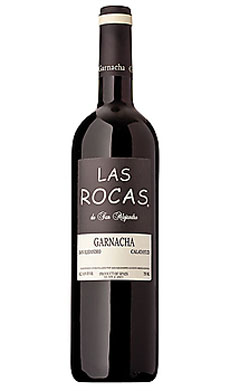TIP OF THE DAY: Have Some Grenache
 A glass of 100% grenache is a new experience for most wine lovers. Photo © Dusan Zidar | Bigstock Photo. |
Grenache (pronounced gruh-NOSH), called Garnacha in Spain, is one of the most widely planted (and highest-yielding) red wine grape varieties in the world. It’s most commonly found in blends, where it’s used to add body and sweet fruitiness. It’s not easy to find a 100% garnacha wine in many U.S. wine stores. But look for Las Rocas and other wines from the Aragon region of northeast Spain (where the grape probably originated, although Sardinia also claims it as a native grape). Five D.O.* regions in Aragon (Calatayud, Campo de Borja, Cariñena, Somontano and Terra Alta) are producing quality wines that are at least 85% Garnacha. (A wine that is at least 85% of a particular varietal can be called by that varietal’s name.) Las Rocas, at $15, os well priced. Grenache grows in hot, dry climates; Spain, Sardinia, the south of France and California’s San Joaquin Valley are prominent growing regions. It is the dominant variety in most Southern Rhône wines, especially in Châteauneuf-du-Pape. BLENDED INTO VERY POPULAR WINES In Spain, Grenache is blended into Rioja. It is used to make rosé wines in France and Spain. If you’ve had a bottle of Tavel (a district in the Côtes du Rhône), you’ve had grenache. |
|
|
Grenache was one of the first grape varieties introduced to Australia in the 18th century. It was the country’s most widely planted red wine grape variety until it was surpassed by Shiraz in the mid 1960s. In was also one of the first grapes to be successfully planted and vinified during the early development of the Washington wine industry, in the early 20th century. Wines made from Grenache tend to lack acid, tannin and color, which is why they are usually blended with Cinsaut, Syrah, Tempranillo or other grapes. In addition to the better-known red wine, there is a white grape, Grenache Blanc or Grenacha Blanca. A wine made with White Grenache is similar to White Zinfandel. White Grenache is a very important grape in France, where it is the fourth most widely planted white variety†. Like red Grenache (Grenache Noir), it is used as a blending grape in the wines of Châteauneuf-du-Pape. |
||



